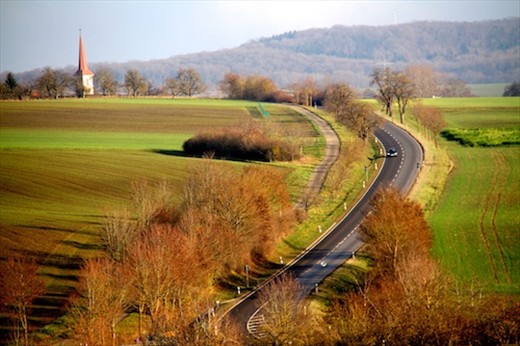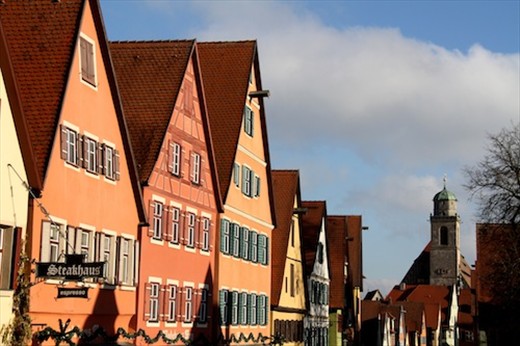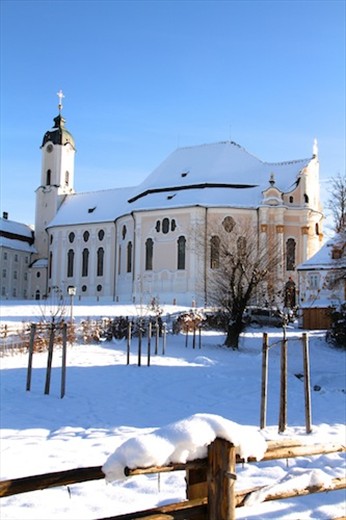Die Romantische Straße lives up to its billing even for old farts like yours truly. It isn’t necessarily the “I can’t wait to get you to our hotel” carnal meaning of romantic but something more ethereal. The Romantic Route traverses the medieval heartland of Bavaria from Wurzburg to Fussen, its walled cities, quintessentially cute villages, onion-domed churches and picturesque farms – basically everything visitors to Germany hope to see. This is true even in winter – perhaps especially in winter – when the hoards of summer visitors are enjoying warmer climes.

Along the Romantic Route
Rothenburg ob der Tauber (not to be confused with just any Rothenburg) is generally considered best in show. Rothenburg is the country’s best-preserved walled town and, consequently, draws the largest crowds. Dozens of tour buses already filled the lots when we arrived on Sunday morning. We managed to squeeze into a tiny space on the street, my parking skills applauded by the folks in the car parked behind us. Inside the walls, a wave of bus people washed around us on the main street, leaving us alone for a while until the next wave. Even with so many tourons it is easy to find a quiet picturesque side street or an uncrowded restaurant.

Dinkelsbuhl, just as colorful but less crowded
Dinkelsbuhl, like Bamburg, is a smaller and quieter version of Rothenburg, much more our style. The buildings are as well-preserved and scenic as in Rothenburg but without the tourist shops. And unlike Bamburg, we had Dinkelsbuhl mostly to ourselves.

If it ain't baroque, don't fix it, Weiskirche WHS
We made a special detour to the remote Weiskirche on our way to our hotel near Fussen. Built at the end of the Baroque epoch, Weiskirche is the epitome of rococo architecture, filled with religious symbolism and opulent to the nth degree.